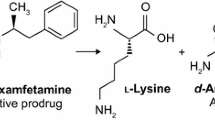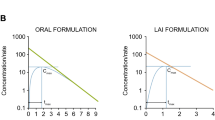Abstract
Sertraline is a selective serotonin reuptake inhibitors used as major therapeutic advances in psychiatry and is drug of choice for treatment of major depressive disorders. The drug (free base) encounters problem of poor aqueous solubility and vulnerability to enzymatic degradation in liver. The hydrochloride salts of free base revert back to its original form in gastrointestinal tract leading to slow/poor absorption. In the current study, sertraline loaded self-nanoemulsifying drug delivery systems (SNEDDS) were prepared in an attempt to circumvent the problems associated with poor aqueous solubility, vulnerability to enzymatic degradation in liver and to sort out the problems associated with salt formation. Preliminary screening was carried out to select proper ingredient combinations. Ternary phase diagrams were then constructed and an optimum system was designated. Formulations selected were then compared for optimization. The systems were assessed for robustness, globule size, cloud point, percentage transmittance, surface morphology and drug release. An optimum system composed of oil (25.42 %), surfactant (49.72 %), and co-surfactant (24.86 %). It possessed a mean globule size, cloud point and percentage transmittance of 63.5 nm, 90 °C and 82.43 %, respectively. Transmission electron microscopy demonstrated spherical particle morphology. The drug release from the selected formulation was significantly higher than other SNEDDS and drug suspension as well. Optimized formulation was subjected to stability studies at different temperature and relative humidity and was found to be stable. No significant variations were observed in the formulation over a period of 3 months at accelerated conditions.




Similar content being viewed by others
References
Baldessssarini RJ (2006) Drug therapy of depression and anxiety disorders. In: Brunton LL (ed) The pharmacological basis of therapeutics, 11th edn. The McGraw-Hill Companies, New York, p 445
Charman WN (2000) Lipids, lipophilic drugs, and oral drug delivery. Some emerging concepts. J Pharm Sci 89:967–978
Grove M, Pedersen GP, Nielsen JL, Mullertz A (2005) Bioavailability of seocalcitol I: relating solubility in biorelevant media with oral bioavailability in rats-effect of medium and long chain triglycerides. J Pharm Sci 94:1830–1838
Gursoy RN, Benita S (2004) Self-emulsifying drug delivery systems (SEDDS) for improved oral delivery of lipophilic drugs. Biomed Pharmacother 58:173–182
Itoh K, Tozuka Y, Oguchi T, Yamamoto K (2002) Improvement of physicochemical properties of N-4472 part I formulation design by using self-microemulsifying system. Int J Pharm 238:153–160
Kohli K, Chopra S, Dhar D, Arora S, Khar RK (2010) Self-emulsifying drug delivery systems: an approach to enhance oral bioavailability. Drug Discov Today 15:958–965
Lawrence MJ, Rees GD (2000) Microemulsion-based media as novel drug delivery systems. Adv Drug Deliv Rev 45:89–121
Mustafa G, Khan ZI, Bansal T, Talegaonkar S (2009) Preparation and characterization of oil in water nano-reservoir systems for improved oral delivery of atorvastatin. Curr Nanosci 5:428–440
Pouton CW (1997) Formulation of self-emulsifying drug delivery systems. Adv Drug Deliv Rev 25:47–58
Rahman MA, Harwansh R, Mirza MA, Hussain S, Hussain A (2011) Oral lipid based drug delivery system (LBDDS): formulation, characterization and application: a review. Curr Drug Deliv 8:330–345
Robinson JR (1996) Introduction: semi-solid formulations for oral drug delivery. Bull Tech Gattefosse 89:11–13
Rosano HL, Cavello JL, Lyons GB (1987) Mechanism of formation of six microemulsion systems. In: Rosano HL, Clausse M (eds) Microemulsion systems. Marcel Dekker, New York, p 259
Serajuddin ATM (1999) Solid dispersion of poorly water-soluble drugs: early promises, subsequent problems and recent breakthroughs. J Pharm Sci 88:1058–1066
Shah NH, Carvagal MT, Patel CI, Infeld MH, Malick AW (1994) Self-emulsifying drug delivery systems (SEDDS) with polyglycolyzed glycerides for improving in vitro dissolution and oral absorption of lipophilic drugs. Int J Pharm 106:15–23
Singh SK, Verma PRP, Razdan B (2010) Development and characterization of a lovastatin loaded self-microemulsifying drug delivery system. Pharm Dev Tech 15:469–483
Tarr BD, Yalkowsky SH (1989) Enhanced intestinal absorption of cyclosporine in rats through the reduction of emulsion droplet size. Pharm Res 6:40–43
Warisnoicharoen W, Lansley AB, Lawrence MJ (2000) Light scattering investigations on dilute non-ionic oil-in-water microemulsions. AAPS Pharm Sci 2:12–15
Zhang P, Liu Y, Feng N, Xu J (2008) Preparation and evaluation of self-microemulsifying drug delivery system of oridonin. Int J Pharm 355:269–276
Acknowledgments
One of the authors, Md. A. Rahman is highly grateful to the University Grant Commission (UGC), Government of India for providing financial assistance. The authors are also thankful to R&D Division, Ranbaxy, Gurgaon (India) for providing the gift sample of the drug.
Author information
Authors and Affiliations
Corresponding author
Rights and permissions
About this article
Cite this article
Rahman, M.A., Iqbal, Z. & Hussain, A. Formulation optimization and in vitro characterization of sertraline loaded self-nanoemulsifying drug delivery system (SNEDDS) for oral administration. Journal of Pharmaceutical Investigation 42, 191–202 (2012). https://doi.org/10.1007/s40005-012-0029-0
Received:
Accepted:
Published:
Issue Date:
DOI: https://doi.org/10.1007/s40005-012-0029-0




